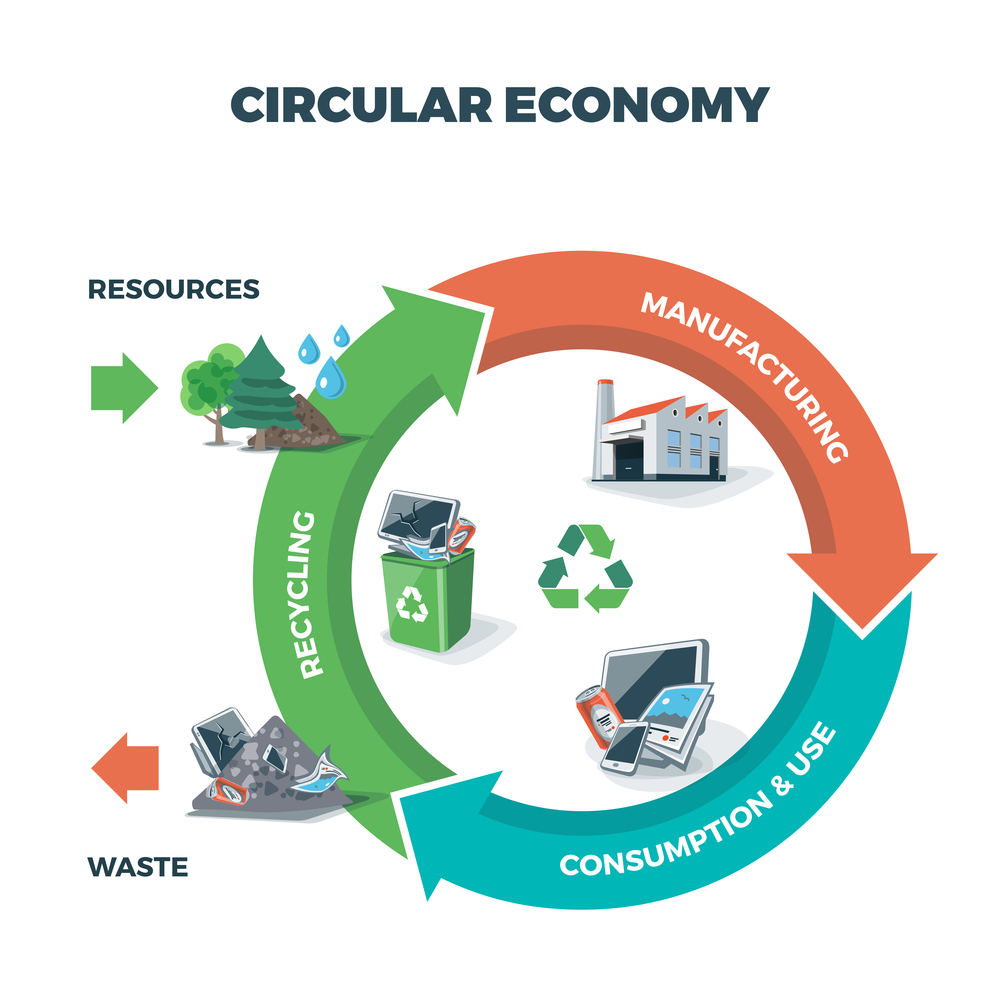E-waste is amongst the most noteworthy contributors to the global landfill issue, as just a 5th of electronic devices are recycled. Moreover, electronic products have particularly short life cycles; the average lifespan for most devices is 4 – 5 years. Moreover, electronic waste is more dangerous than most other kinds of trash since it brings heavy metals such as lithium, lead, and mercury into the soil, which can then go into groundwater.
As technological advancements speed up and consumers constantly look for the latest and finest products, the electronic waste (e-waste) issue will step up if improvement strategies are not implemented. With the help of the circular economy, we can manage the ecological impact of electronics. In addition, there are economic incentives for repurposing materials.
What Is The Circular Economy?
An economic system to get rid of e-waste (or any waste) is using the resources again for an indefinite period, the circular economy merges conventional conservation efforts – such as reduce, reuse, and recycle – with new strategies – such as renting goods in place of buying them. In addition, it calls for strategic manufacturing from the design stage to plan for reuse or recycling at the end of the lifespan of a product.
Can We Save Our Planet By Supporting The Circular Economy?
Indeed, practicing an utterly circular economy in which there is virtually no waste is an uphill battle. Before the Industrial Revolution, waste was much less of a worry. For example, farmers would purchase as much livestock as their land could support, so having an excess of dairy or meat was an unlikely occasion.
Given the intricacy of supply and manufacturing chains these days, planning to eliminate waste will require tremendous cooperation and foresight. With every sort of waste, we turn out. However, there is a prospect for innovation. Several companies have gotten innovative and started transferring waste into resources for others; for example, a significant insulin maker now sends its waste to bioenergy plants to convert by-products into fertilizer and biogas.
Most significantly, governments must pass legislation that will lay the base for the circular economy. From there, retailers, manufacturers, and other businesses will take on compliance endeavours that satisfy the regulatory conditions. This procedure is already in progress in Ontario (https://www.ontario.ca/page/producer-responsibility-ontarios-waste-diversion-programs.), where manufacturers are being held accountable for managing the waste produced by their products and packaging.
The EPR (Extended Producer Responsibility) program replaces the conventional, linear industrial economy with closed-loop materials management. It necessitates businesses to fund the expenditure of securely disposing or recycling the waste produced by their products or take a pioneering approach to repurpose their end-of-life products, thus transforming the supply chain into a continuous loop.
Ontario is the 1st region globally to pass such a comprehensive policy, and TechReset is proud to be headquartered in the province.
While there is no way to say whether we will ever achieve zero waste, we can do our best to reduce the contributions to landfills by making mindful selections. One good place to begin is making sure the electronic waste (e-waste) is disposed of correctly.
How Should E-waste Be Handled?
From electronic drop-off bins placed across the country to partnerships with companies of all sizes, the ongoing efforts of TechReset are focused on providing ethical solutions for processing electronic waste and doing our part to support the circular economy.
If you have ongoing waste from electronic equipment, turn to TechReset for certified e-waste recycling. Feel free to contact the professionals of TechReset at 905 510 8969 or drop an e-mail at mark@techreset.com!
